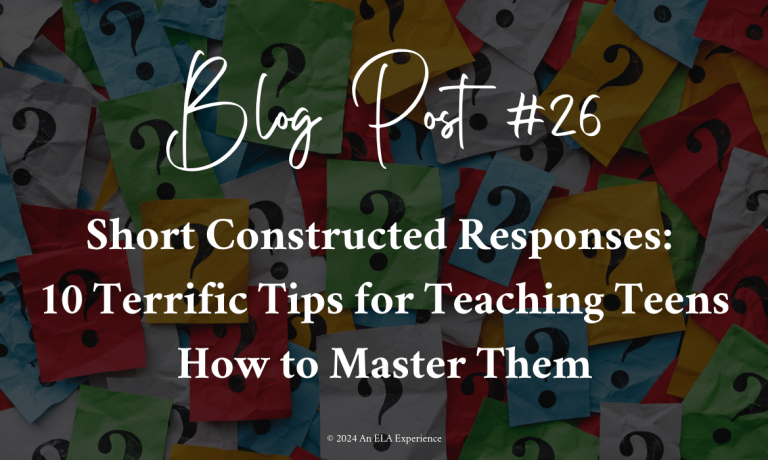I fell in love with short constructed responses the moment I was introduced to them. Sounds weird, but when you’ve spent a hundred years scoring essays, these writings are a welcome relief because they can be quickly scored and written (a bonus for you and your students).
And that’s not the only great thing about them:
- Short constructed responses (aka short answer responses and short answer questions) are great for inferencing assessments (e.g., when students are asked to infer tone, theme, author’s purpose, etc.).
- They can be used to assess any reading (fiction or nonfiction).
- The formatting of a short-constructed response is like that of a body paragraph. Therefore, when teaching students to write essays, you can refer back to these questions and show them how the body paragraphs of their essays should resemble their responses for these questions (with topic sentences, textual evidence, explanations, and concluding sentences).
- They get kids writing academically, whether it’s for a daily grade or a major assessment.
- Short constructed responses are easy to create (which will be discussed in detail in tip 6).
Now, let’s move on to the reason you’re reading: the tips for teaching short constructed responses.
Tip 1
Introduce students to short constructed responses by hooking them with a commercial.
Students’ love for videos is as strong (possibly stronger) than mine for short constructed responses. When I show a video and scan my classroom, every eye is on the screen (as long as the video is interesting).
For this reason, I often hook my students with short videos that connect to the lesson. I usually do this at the beginning of the period (after our warm-up and before the lesson) so I can grab their attention immediately.
Use this Doritos’ commercial to introduce short constructed responses:
- View the commercial.
- Discuss the following questions: Who killed the cat? What evidence do you have to support this response? (View the video again if needed.)
- Review the rubric you’ll use to score their responses. (See tip 2.)
- Teach students a mnemonic for responding to short constructed responses. (See tip 3.)
- Respond to the question in writing as a class. (See tip 4.)
Here’s a response my students and I wrote together:
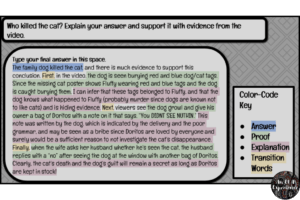
After responding to the Doritos’ question as a class, I ask students to work individually to answer a question. This time we watch a State Farm commercial, and students respond to the following:
Who (or what) burned down Sheryl’s she shed? Explain your answer and support it with evidence from the video.
This exemplary response was written by a seventh-grade GT student:

Tip 2
Review a short-constructed response rubric with students.
0-3 Short-Constructed Response Rubric

I like to use this rubric because it rewards students whose responses go above and beyond. Plus, I think it’s the best for writing in general because when writers want to prove a point they use more than one piece of evidence to support that point and/or make an amazing insight.
Read the rubric with students to show them what they need to do to earn an A. (Consider asking for volunteers to read one section each.)
0-2 Short-Constructed Response Rubric
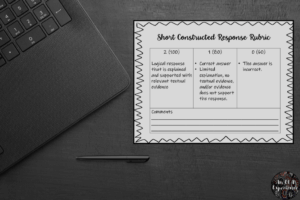
On the Texas STAAR, students can score from a 0 to a 2. A 2 is a great response because students have to correctly answer the question and support their response to receive that score and full credit.
Tip 3
Provide students with a mnemonic to use when answering short constructed responses.
APE (answer, proof, explanation)
I use this mnemonic because it’s simple and easy to remember. It reminds students that they have to answer the question, prove their response, and explain their reasoning.
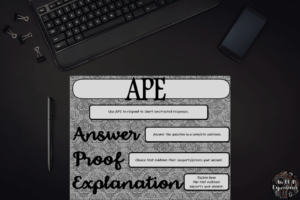
CER (claim, evidence, reasoning)
This has the same components as APE, but the vocabulary is at a higher level. (I used this one with gifted students in a science class.)
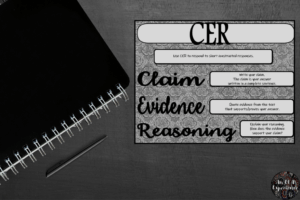
RACE (restate, answer, cite, explain)
With this mnemonic, students restate the question by reformatting it into a declarative sentence, answer the question, cite their evidence, and explain their reasoning.
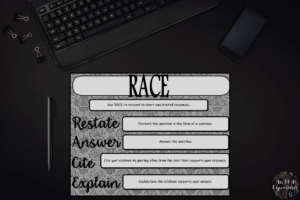
Whichever mnemonic you choose, provide students with a copy so they can easily refer to it whenever they are required to answer these types of questions. (They can tape it into their writers’ notebooks.)
Also, to avoid receiving formulaic responses, when introducing these mnemonics, tell students that their responses must include all components of the mnemonic; however, they can write them in the order they believe works best. They can also add additional quotes and explanations to support their responses.
Tip 4
Demonstrate how to respond to short constructed responses.
Modeling is a game changer, and that shouldn’t be a surprise. After all, it makes sense that students will better understand how to complete a task if they are shown what to do rather than just being told to do it.
When initially teaching students how to respond to short answer questions, we compose the paragraph together (as discussed earlier) with me using a document camera to project my writing onto the screen and the students writing everything I write along with providing input.
As we write the paragraph, I note what will score a 0, 1, and 2 (sometimes 3 depending on the rubric). This allows for another review of the rubric and additional understanding of the requirements. You can also highlight the components of the mnemonic we’re using to illustrate to students how these can come together into one paragraph.
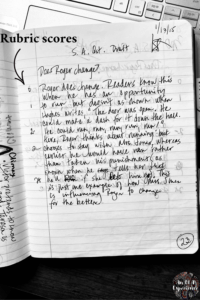
Again, students can keep this writing in their writers’ notebooks for easy reference.
Tip 5
Show students how to write a topic sentence for the short-constructed response.
This is the answer part of APE (or the claim for CER or the R and A for RACE).
The easiest way to write this is to take the question and turn it into a declarative sentence with an answer.

Examples
What message is the author trying to convey in this passage?
The message the author is trying to convey is __________.
More mature writers may write something like this:
One theme expressed by __________ is __________.
Start with the simple and move to the complex.
When modeling, if the answer is correct, students would score a 1. I note this in the margin when demonstrating (along with a 0 and 2 as we move through the paragraph).
Tip 6
Teach students transitional words and phrases to help one sentence flow into the other.
Some students will want to slap the supporting quote directly after the answer, but don’t encourage this. Instead, provide them with a list of transitional words and phrases.
Examples of transitional phrases as sentence stems
- This is shown when the author states, “__________.”
- According to __________, “__________.”
- One example where this is evident is seen when __________ states, “__________.”
- This is proven when the author states, “__________.”
- For example, when _________ writes, “__________,” readers can infer __________.
Tip 7
Model how to use quotation marks when integrating evidence.
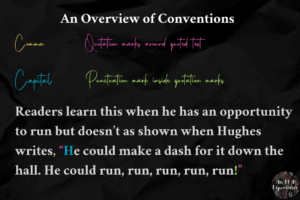
This is the proof part of APE (the reasoning part of CER and the citing for RACE).
When students’ evidence is specific enough, they can score high without directly quoting the text. However, most students aren’t that detailed with their responses. For this reason, I teach them to quote the supporting evidence word for word. I also show them how to use the ellipsis because sometimes they don’t need to quote the entire sentence to support their responses.
Again, this is brought in with modeling.
- Commas are placed after the tag word (e.g., Mrs. Smith states, “Writing improves writing”).
- Quotation marks are placed around the text being quoted.
- The period is placed inside the quotation marks.
- The ellipsis is three periods (aka dots). (I use the words ellipsis and dot, dot, dot when teaching to help students remember that the ellipsis is three dots.) It is used wherever words are omitted from the quote. If the words are omitted at the end of the sentence, use four dots (ellipsis and period) with one space between each.
Tip 8
Write short constructed response questions for texts you study.
To do this, search the internet for your state test. You’ll want to imitate these questions so your students are familiar with the verbiage and types of questions.
The following are examples from Texas’s STAAR test.
These can be used without any modifications:
What is the most likely reason the author wrote the selection? Support your answer with evidence from the selection.
What is the author’s main message in the selection? Support your answer with evidence from the selection.
These can be modified by filling in the underlined portions with information about the text your students are reading.
Based on the information in paragraphs __________ of the article “__________,” what is the most likely reason __________? Support your answer with evidence from the article.
Based on the information in paragraph __________, what can the reader most likely infer about __________? Support your answer with evidence from the selection.
How does the playwright’s characterization of __________ contribute to a theme of the play? Support your answer with evidence from the play.
By doing this, your students will be familiar with these types of questions before the state test.
Tip 9
Use exemplary student responses for review.
Students love being recognized for great writing!
With this in mind, the next time you grade short constructed responses, draw stars on the best ones. Then, before they respond to another one of these questions, conduct a brief review by reading one to three of the best responses.
Cover students’ names with sticky notes. After you read, ask if they’d like to be recognized. Remember not to share low responses. You don’t want to embarrass anyone.
Also, return all papers so students can see how they did and what they need to do to improve their writing. To make this more evident to students, ask them to highlight the components of APE in different colors to see what they are missing.
Tip 10
Practice scoring with published examples from your state’s released tests.
- Go to the state website and search for released tests. (For the Texas STAAR test, I visit the TEA website; click on A-Z Index, S, STAAR, Reading Language Arts Resources, and Constructed Response Scoring Guides; and select the year and grade level.)
- Print the scoring guide.
- Cut the pages so you can show one response at a time in the order you prefer.
- Use your document camera to project the responses onto the screen.
- Ask volunteers to read the responses.
- Have students indicate the score they think the response received by holding up 0-2 fingers.
- Display and discuss the state’s score.
Related Articles
The writing short constructed response is another type of short answer question on the STAAR test. Here students are asked to revise sentences. I truly believe that sentence combining is one practice that helps with these questions, so I’m including links to resources for you:
For free resources to introduce comma rules, scroll to the bottom of this page and input your name and email address. In return, you’ll receive an introductory slideshow along with a few other goodies.
For sentence combining warm-ups, visit “Grammar Warm-Ups Bundle” at my TPT store.
For more information on short constructed responses, check out this blog post: Ways to Support Students with Constructed Response Reading Questions.

Thank you so much for reading! Here’s to you falling in love with short constructed response tips too!

